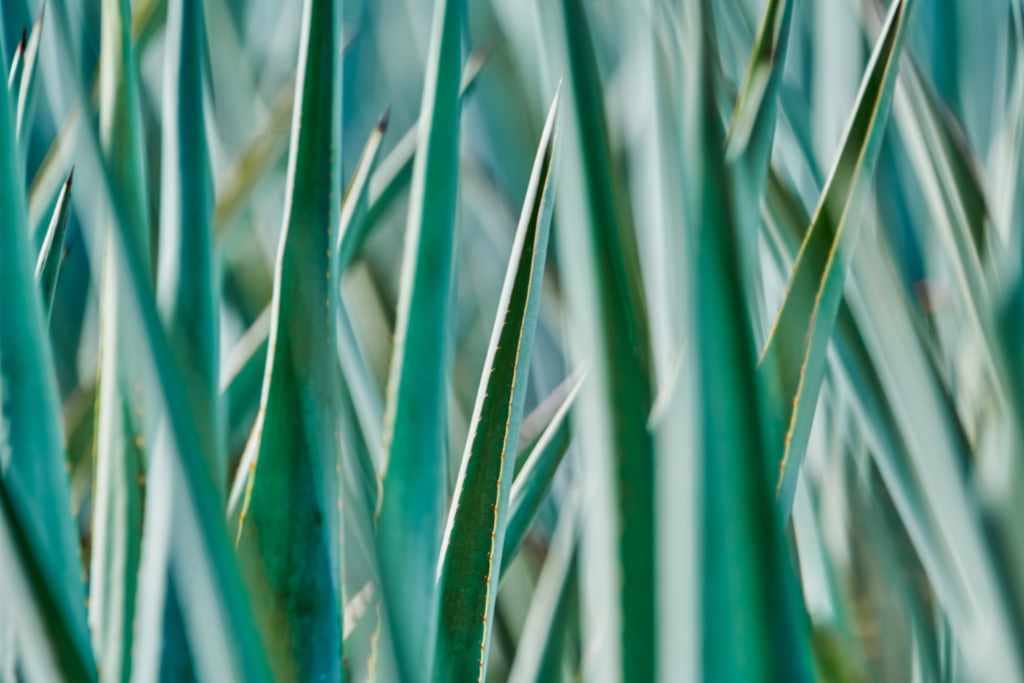All About Agave
All About Agave
Take a moment and imagine you’re enjoying a glass of your favourite tequila. Sip after sip, you savour the aroma and myriad of flavours. Before long, you’re tipping your head back to capture the last drops on your lips and reaching for more.
While tequila takes mere minutes to enjoy, the creation process takes numerous years of dedicated work and precise attention. And how does tequila production begin? With Blue Weber agave.
Planting, Growing & Harvesting Agave

Agave plants have different methods of reproduction. The common way is when the agave sprouts hijuelos (small clones of the agave plant) near their bases. These hijuelos are taken and laid out in the sun for three to five months until they’re on the verge of death, and then planted. Having these little shoots go through this natural selection test ensures they’re a heartier, more robust plant with an overall better chance of survival.
The growth process of agave is relatively low maintenance. While the plant can die in the cold, agave doesn’t need consistent watering, trimming or upkeep. The biggest keys in growing agave fit for tequila is hacking off the quiote stalk on a fully matured agave to preserve the sugars within the heart of the plant and patience.
Distillers often wait a minimum of six years before processing agave. More sugar is available for extraction from the plant when agave grows for a longer period. Putting an immature agave through the distillation process could create a bitter, unenjoyable tequila.
Jimadors cut leaves away from the piña (the heart of the agave) with a sharp, long-handled coa and load them onto a truck. Mature piñas can weigh anywhere from 30 to upwards of 200 pounds, yet experienced jimadors can load hundreds per day.
To Each Their Own
For tequila to be considered tequila, distilleries have to abide by certain regulations enforced by the CRT (El Consejo Regulador del Tequila, which is the Tequila Regulatory Council). After the agave plants leave the hands of the jimadors, distilleries can get creative with their recipes regarding crushing, cooking, fermentation, distillation and aging.
Most distilleries use a brick oven (horno) to cook their agave and turn the starch from the plant into sugar. To avoid traumatizing the agave, they’re cut into halves or quarters and slowly brought up to temperature. Every tequila method varies, but agave can be cooked in a horno for three days. Then, the plants go through a crushing process where their liquids are extracted for tequila creation.
Whatever is left of the agave fibres is often used for compost or animal feed. For the creation of tequila, there is still the process of fermentation, distillation and aging. However, the role of the agave plant ends here. The remaining decisions about the process that the distilleries make have a direct impact on how much (or how little) agave flavour comes through in the final product. To us, the more agave and earthy flavours the better!
No Agave, No Tequila. No Tequila, No Party!
As the popularity of tequila is increasing by the day and the demand for agave is higher than ever, we wanted to share our agave knowledge and gratitude. The commitment and hard work that goes into quality tequila cannot be overlooked.
Every bottle of tequila on our shelves is 100 percent de agave with unique recipes, practices and histories. The next time you join us for a glass of tequila, we encourage you to take a moment—allow the spirit to coat your tongue and warm your soul.
What do you taste?